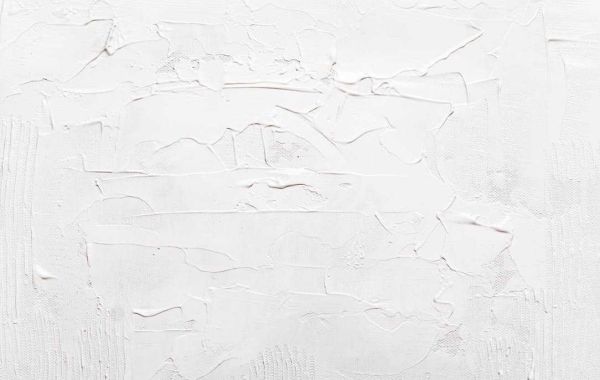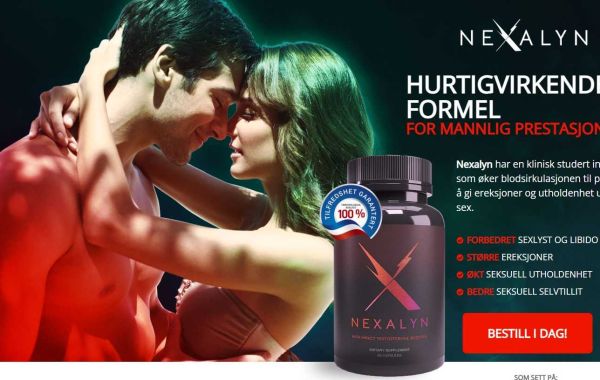Everyone hates getting a flat tyre. So what's the answer? According to tyre and sealant makers, going tubeless will basically guarantee that you’ll never have to worry about punctures again.
But is this correct? Moreover, is it right for you and your bike?
Before you start faffing about with rubber and rim strips, let’s check out the good bits, the bad bits, and the controversial bits of running a tubeless setup.
HOW DO TUBELESS TYRES WORK?
For those who have never delved into the wonderful world of tubelessness, here’s a super-quick overview on how tubeless tyres work.
A regular tyre has a tube inside it. A tubeless setup, on the other hand, runs a liquid (sealant) in place of the tube.
But how does sealant stop you getting a flat tyre?
Sealant contains small particles which act as a clumping agent. When a sharp object punctures the tyre, air is forced out and the sealant particles are pulled into the hole. As the wheel spins, the particles clump together and seal the hole up. (Think of how your blood congeals at a wound site when you cut yourself. Gross, yet an apt analogy.)

Anyway, the hole is plugged, and voila! You can keep riding like nothing’s happened.
WHAT IS THE ADVANTAGE OF TUBELESS TYRES?
The first one is the biggie:
GREATER PROTECTION AGAINST FLAT TYRES
It’s pretty likely that you have suffered a flat tyre at some point, often due to a piece of glass, thorn or wire. With a tubeless setup, however, you can just keep on rolling over these pointy little things while the sealant does its job. (If it’s set up correctly. We’ll get to that in a moment.)
We’ve seen tyres come back from a ride with more thorns in them than a rose bush, and they’re still inflated. With tubes, one thorn is enough to finish your ride, at least temporarily.
YOU CAN RUN LOWER PRESSURE IN YOUR TYRES
One of the main reasons bike riders run high pressure in tubed tyres is to avoid getting a pinch flat (also known as a ‘snake bite’ because of the distinctive two-hole pattern).
A pinch flat happens when the tyre hits an object—most often a rock or gutter’s edge—with enough force for the rim to contact the tyre sidewalls, with the tube wedged in between. The violence of the impact is enough for the rim to puncture the tube.
Without tubes, there’s no risk of this style of pinch flat, so you can run lower pressures to give you more squish, grip and traction. (Although, even with a tubeless setup, if your pressure is too low, you can still do the same damage, only to the tyre instead of the tube.)
This advantage is primarily more suited for off-road riding, but roadies can still run lower pressure as well.

YOU CAN USE TYRE LINERS FOR EXTRA PROTECTION
Many mountain bikers, and some gravel riders – especially if they’re a smash-everything-in-their-path kind of cyclist – use foam inner liners such as Cushcore to cushion against impacts and protect their rims and tyres from damage.
With a tubeless setup, you can run liners and sealant at the same time. With tubes, however, there’s no room for a liner, so you run the risk of rim damage – not to mention pinch flats – on hard hits.
YOU GET SOME WARNING BEFORE THINGS GO SOUTH
Here’s one for the roadies. One thing that many road cyclists fear is the mid-descent blow-out. If you get a puncture at high speed on a road bike, the first thing you hear is a bang, and often the second thing you hear is an ambulance siren, after you wake up.
Sealant, however, slows down the rate of tyre deflation. Rather than the bam! of an instant flat tyre, you’ll hear the sealant hissing (plus you’ll probably cop a bit of spray) and feel the handling change. This few seconds’ notice should be enough to give you time to slow down safely.

"OK, well, that all sounds great!"
Wait, we haven't finished.
WHAT ARE THE DOWNSIDES OF TUBELESS TYRES?
There are a few.
IT CAN BE EXPENSIVE
To run a tubeless setup, you need:
- tubeless-compatible rims
- tubeless-compatible tyres
- tubeless rim tape
- tubeless valves
- sealant
Even if your rims are compatible, you’ll still need all of the other items.
If your rims aren’t compatible, you’re up for a rebuild with new rims at best, or, at worst, a completely new set of wheels.
WAIT, CAN’T I JUST ADD SEALANT TO MY REGULAR TYRES?
You can try, but the results usually aren’t great. We’ve seen some pretty spectacular DIY jobs with fifty layers of gaffa tape, but it’s far less of a headache to actually use tubeless-compatible products.
Tubeless tyres are also more reinforced when compared to a tube-type tyre, so if you use non-tubeless tyres there's high chance of a catastrophic failure while you’re riding. Getting tubeless tyres to seal up can be tricky enough; don’t add to the problem by trying to MacGuyver your tubed tyres to do something they’re not designed for.
On the expenses front, you will also need a way to seat (e.g. pump up and seal) the tyres quickly. A hand pump won’t do this; you’ll need a high-pressure floor pump designed for tubeless tyres, or, even better, an air compressor. Speaking of which…

IT CAN BE FIDDLY AND MESSY
Tubeless tyres are a much tighter fit than regular ones in order to give an airtight seal between the tyre bead (the edge of the tyre) and the rim. Remember: there’s liquid sloshing around in there – it’s got to stay inside to do its job.
You’ll also become quite intimately acquainted with the sealant itself, even if you don’t want to.
Here, for example, is an excellent example of what not to do when using an air compressor:
The horror.... the horror...!
Even if you manage to set your tyres up without covering yourself in goo (well done!), when you do get a puncture, there’ll be a sudden spray of sealant before the particles do their magic, particularly with the higher pressures that road bikes require. So be prepared to get wet.
IT NEEDS MAINTENANCE
To be fair, it’s not much.
Sealant doesn’t last forever, and dries out over time. The active ingredients also only remain active for a relatively short period. You usually need to top it up every one to three months, depending on the brand and conditions (e.g. it will dry out much faster in hot weather). It’s not a set-and-forget system like a tube is.
You can also add the ongoing cost of sealant to the ‘it can be expensive’ list.

IT’S NOT BULLETPROOF
A tubeless system will help you avoid a lot of flat tyres, but if you rip a hole in your sidewall, slash your tread open, or cop a massive puncture, even the best sealant isn’t going to help you there. You’ll either need to use a tyre plug to seal the hole, or, failing that, chuck a tube in to get you home. (Fitting a tube trailside to a tyre full of sealant is also messy as hell.)
“Wait, so I need to carry more stuff with me?”
Yup. Even with a great tubeless setup, it’s a good idea to have a tyre plug and a spare tube with you, especially on long rides where you can’t catch a lift home should you suffer a catastrophic tyre-shredding incident.

IT ADDS WEIGHT
While mountain bikers don’t really need to worry about this so much (as the difference is relatively negligible), the weight penalty of the tubeless system is something that roadies should take into consideration.
Tubeless tyres have to be heavier than their tubed counterparts because they must be able to withstand high pressures without the support of a tube. When we consider the weight of a tubeless tyre plus sealant versus a lightweight tubed tyre plus a light tube, the additional rolling mass can be enough to be noticeable for the rider.
It’s also often argued that tubeless road tyres offer lower rolling resistance which more than compensates for the increase in rotational mass. From our personal experience, however, this simply isn’t the case (at least in regards to how the rider perceives the bike to feel).

IT CAN ADD TO THE COST OF REPAIRS
From a mechanic’s point of view, if we’re servicing a wheel and need to replace nipples or spokes (particularly internal nipples), we have to remove the tyre. If it’s set up tubeless, that means getting the tyre off, salvaging the liquid sealant (if there’s any left), removing the tubeless rim tape, and then afterwards cleaning the rim thoroughly before re-taping it and putting it all back together again. As a result, that wheel service takes three times as long, and costs three times as much.
If the tubeless setup also hasn’t been done very well, it can lead to issues where the sealant leaks past the rim tape and into the spoke holes, essentially filling up your rim with hardened goo. Hmm… chiselling it out, or buying a new wheel? Decisions, decisions.

SO, IS TUBELESS BETTER THAN TUBES?
Absolutely…sort of.
The biggest problem for sealant is the fight against pressure. Road tyres have such a small volume of air that the pressure needs to be much higher compared to an MTB or gravel tyre.
Think of it like this: all tyres need to have the same volume of air to keep you and the bike from running on the rims. Because of this required amount of air, as soon as you decrease the volume, you need to proportionally increase the pressure.
Even the best tyre sealants we’ve tested only work effectively up to a max of around 60psi (and even then still struggle). MTBs often run pressures of 15-25psi, and gravel tyres are usually in the vicinity of 20-35psi—well under the dreaded 60psi limit. Road tyres—and here we’re referring to 23-28mm tyres—generally will start at 65-70psi and go up from there.
When we have these figures in mind, it’s easy to see why the tubeless technology for road bikes hasn’t quite been perfected yet. It will come, but when we consider the increased system mass plus the limited effectiveness of the sealant to do its job at these pressures, we’re not there yet.

Having said that, because of the reduced rate of deflation with tubeless tyres and sealant, even if you do get a puncture and are losing pressure while the sealant tries to do its job, this gives you time to slow your road bike down to a safe speed and prepare to stop.
The main advantage of tubeless tyres—far fewer flats—is a pretty big advantage and, for many people, this aspect will outweigh almost any downside. After all, once you’ve got everything in place, all you need to do is remember to keep your sealant topped up and away you go.
In short:
SHOULD I RUN TUBELESS TYRES ON MY MOUNTAIN BIKE?
Absolutely yes.
SHOULD I RUN TUBELESS TYRES ON MY GRAVEL BIKE?
Once again, definitely yes.
SHOULD I RUN TUBELESS TYRES ON MY ROAD BIKE?
Maybe, but probably no.
If performance is your main priority, a lightweight tyre and tube option will definitely out-perform the current range of tubeless tyres and sealants. If you’re more concerned with slowing down punctures, then sure, why not go for it.
Our feeling is that there will need to be a next generation of sealants developed to handle the higher pressures of road tyres. Once this happens (and road tyres continue to develop), tubeless for the road will be as commonplace as it is for MTB and gravel.
Just be careful with that air compressor.









